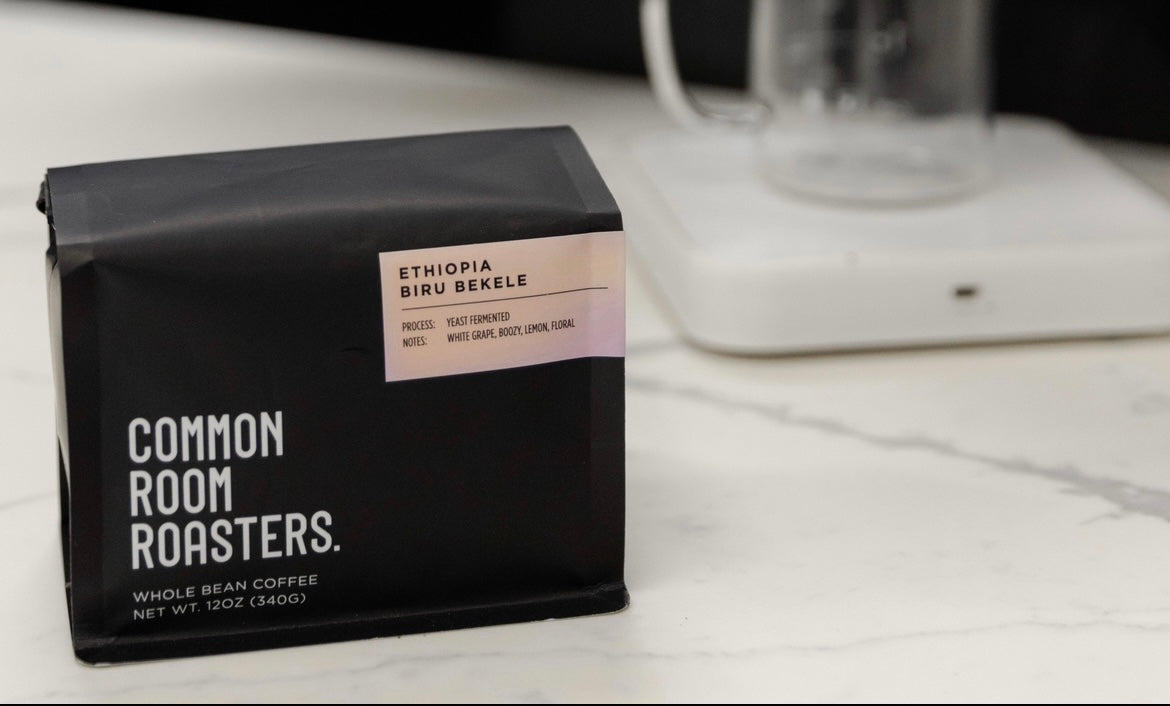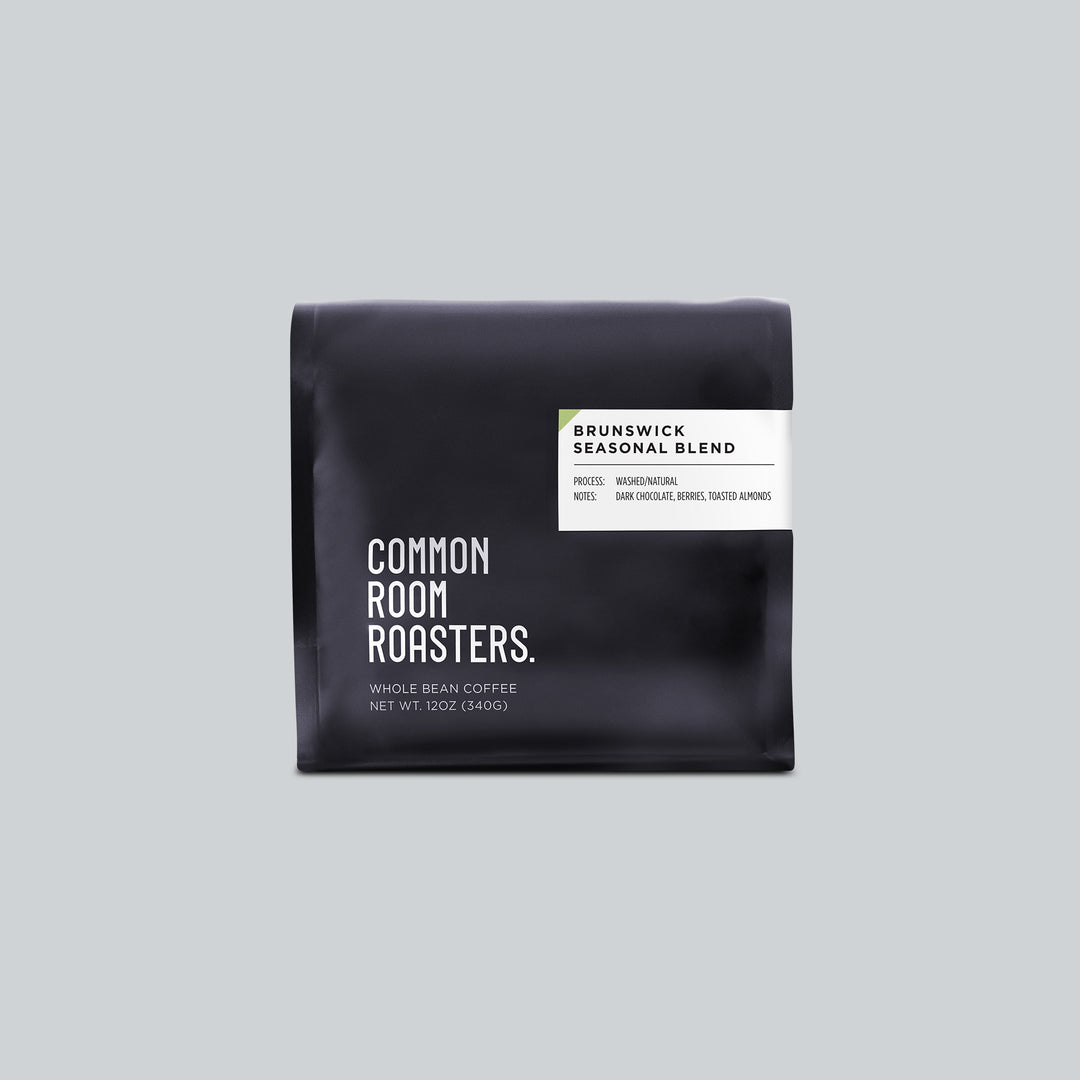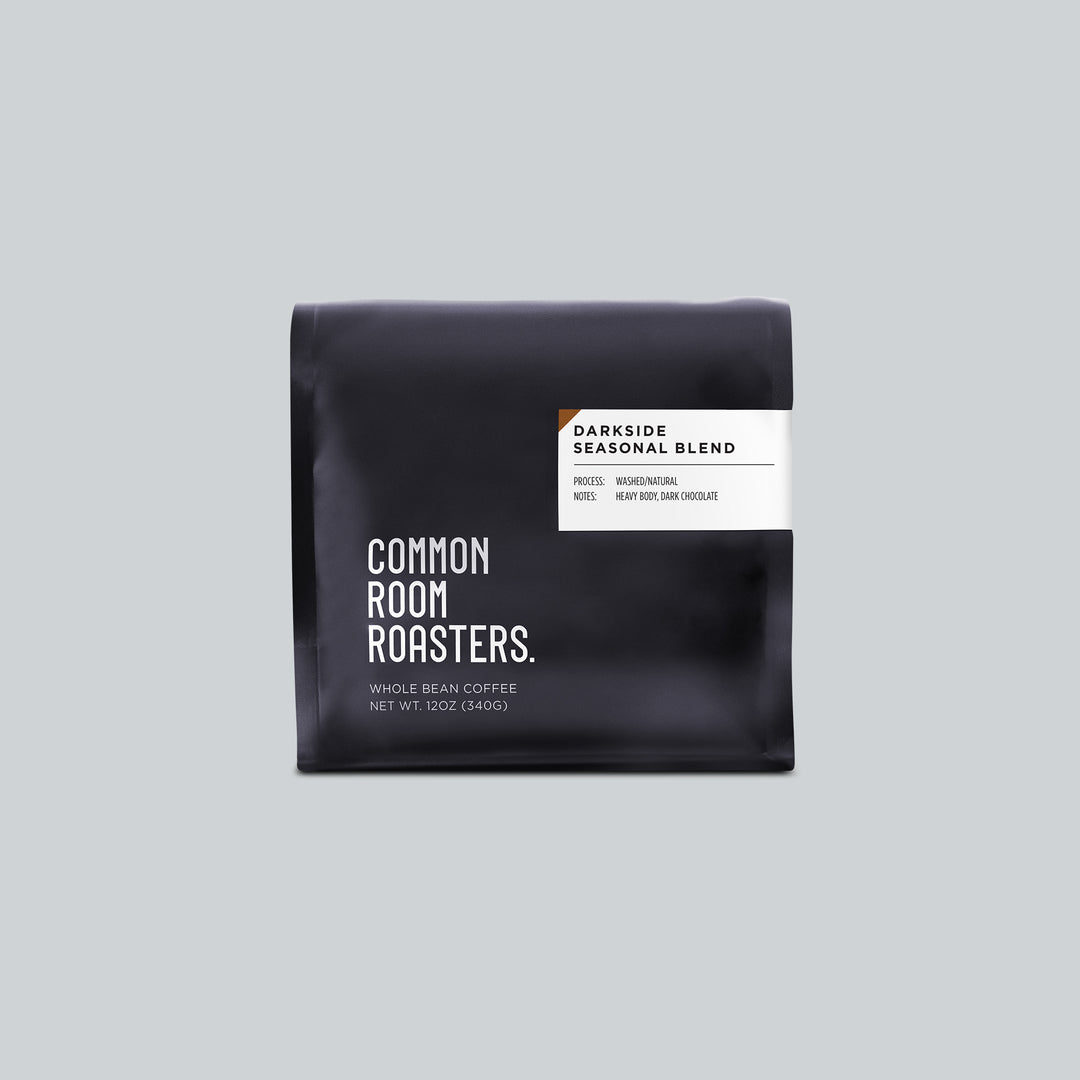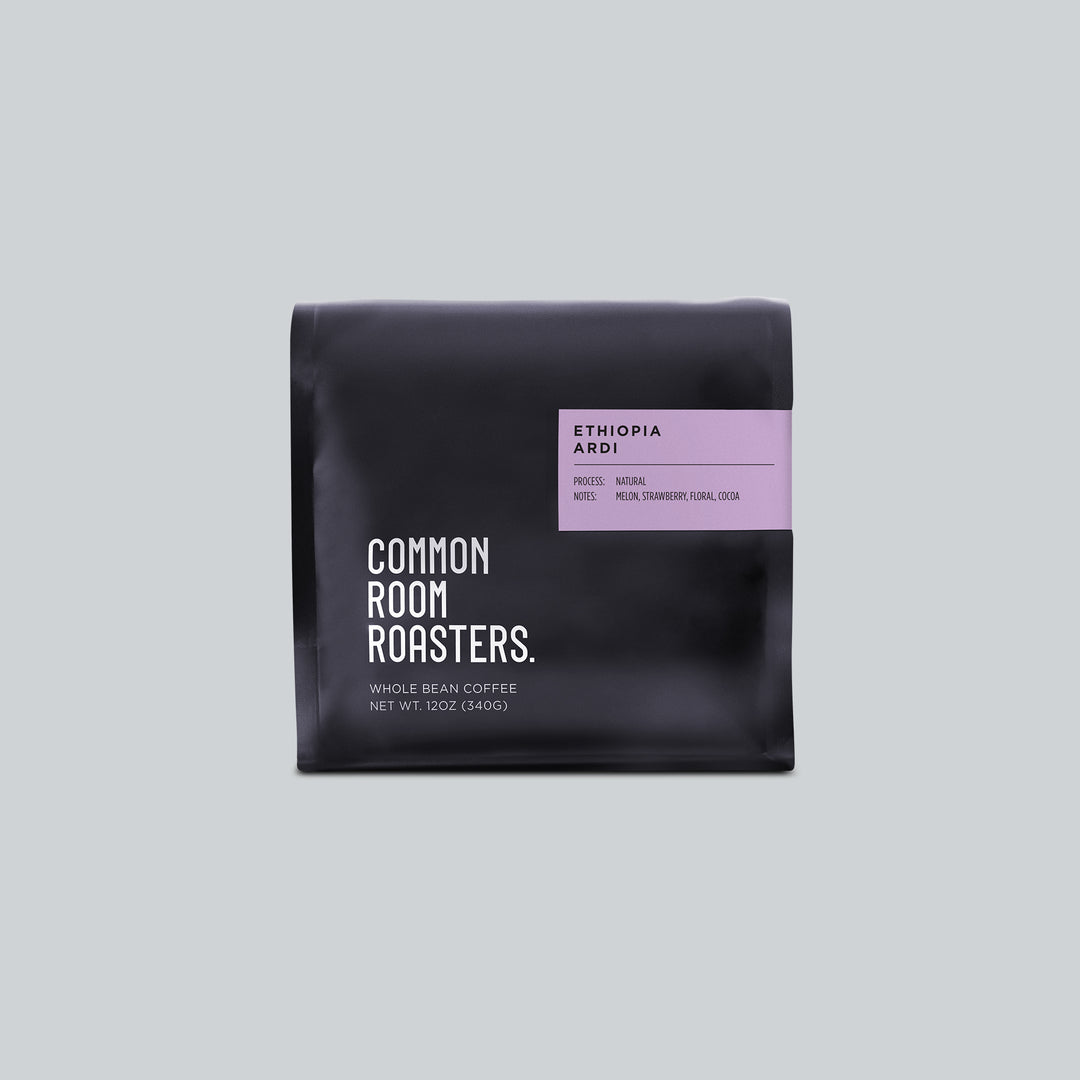Coffee Fermentation Processes- What Do They Mean?

Coffee Fermentation Processes
Over the years, coffee connoisseurs have developed innovative methods to explore new flavor profiles to enhance the tasting notes and create a memorable experience. A few of these fermentations include honey process, yeast fermentation, anaerobic, and carbonic coffee. This is done through modifying the amount of pulp and mucilage on the bean, exposure to air, or lack of exposure to air. Common Room Roasters is committed to bringing a variety of coffee processes to the cupping table and selecting the ones that stand out most, this includes a variety of fermented coffees for their Reserve Single Origin offering.
Honey Process
One of the more common fermentation methods is the honey process, this results in a sweet smooth flavor profile with mild acidity. The name comes from the sticky texture that develops as the mucilage dries to the seeds. There are no bees involved! There are a few variants within the honey process such as black, red, yellow, and white which is determined by the amount of pulp attached to the green bean during the fermentation. Timing is important in this process as the beans have to be constantly rotated so that the sugars develop and avoid molding. There is also little water involved in the honey fermentation compared to other coffee processes which makes it a more eco-conscious method.
Yeast Fermented
In yeast fermented coffee, the cherries undergo a meticulous process where specific strains of yeast are introduced to work on the sugars present in the mucilage surrounding the beans. The controlled fermentation period is crucial in unlocking the full potential of the coffee's flavor profile, enhancing its complexity and depth. This technique, which draws inspiration from the fermentation processes used in winemaking and brewing, aims to enhance the flavor profile of the coffee beans by unlocking a broader spectrum of aromatic compounds. You can experience this coffee process as Common Room Roasters is offering the Biru Bekele Yeast Fermented Coffee as one of their Reserve Single Origins which presents a bold flavor profile with notes of white grape, boozy, lemon, and floral.
Anaerobic Coffee
In addition to these other processes, a new method has been developed called anaerobic fermentation. During this process, the coffee is trapped in a chamber with no oxygen which causes the bacteria and yeast to develop and result in unique flavor profiles. The process is best suited with coffees grown in low altitude and humidity with warmer temperatures. Anaerobic process is when the coffee has been pulped whereas the carbonic maceration is for the depulped. These coffees often result in memorable flavors of deep fruit, winey, and syrupy body.
Overall, there is a wide range of fermentation processes that have developed over the years and coffee producers are becoming more innovative to create unique flavor profiles. You can see through these processes how a coffee can be controlled to present new mouth feels, a syrupy body, and result in memorable tasting experiences. There are small changes such as percentage of pulp attached to the bean, exposure to air, temperature, and how the natural sugars develop that result in such different flavor profiles. So whether you are a coffee connoisseur or someone who is interested in expanding their coffee pallet, there are a variety of processes to be experienced that are continually developing.















